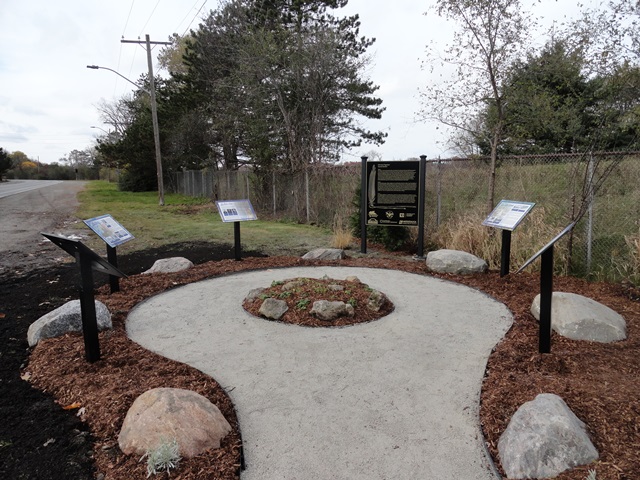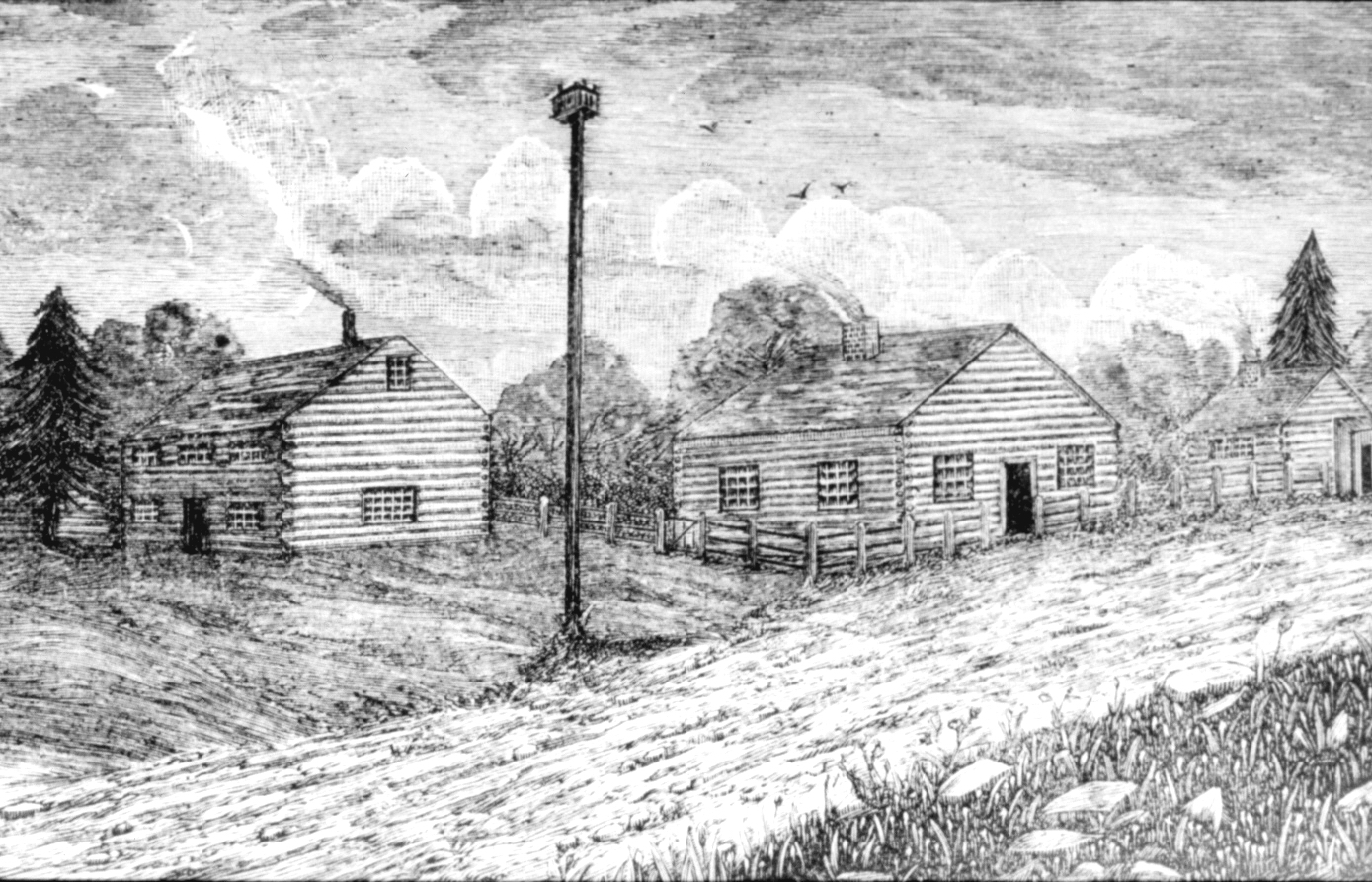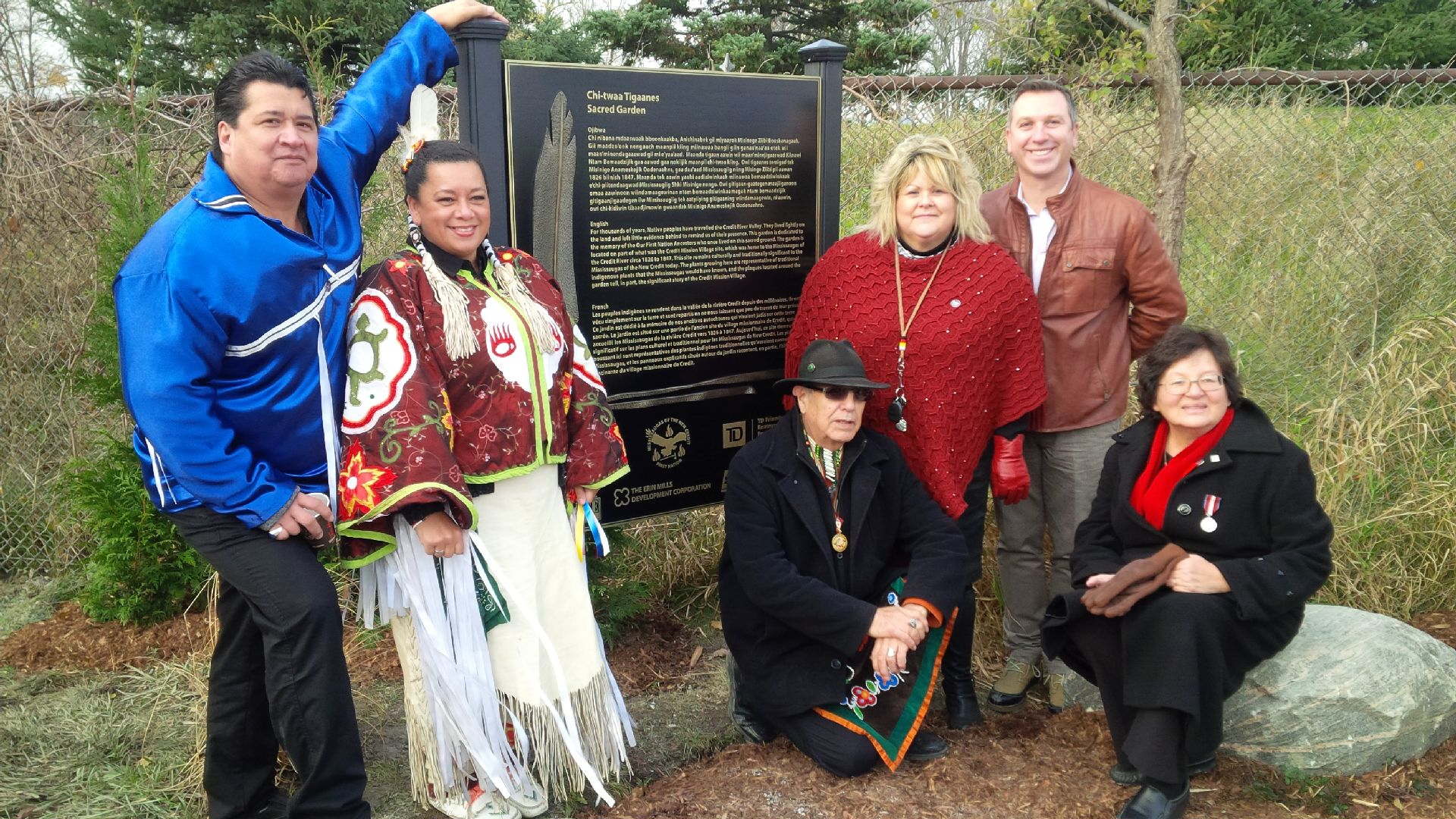It was chilly, breezy Sunday in 2014 – November 9, 2014 to be exact – and we were gathered along Mississauga Road, not far from the entrance to the Mississaugua Golf and Country Club, for the opening ceremonies for Chi-twaa Tigannes – the Sacred Garden.

I recall having a conversation with one of the audience members, while I held onto the post of the canopy to keep it from lifting in the wind, about the location of the garden. The question was something along the lines of “couldn’t you have found a better place?”

Yes, the Sacred Garden is tucked along the edge of Mississauga Road, which is a heavily travelled route, and in close proximity and earshot of the QEW. But the placement is important. Given the changes that the landscape has seen in this area over the past 100 years, there are very few opportunities to stand in the direct footsteps of the past.
The Sacred Garden honours the story, and memory, of the Credit Mission Village, which was located along Mississauga Road between 1826 and 1847.

The buildings of the village itself survived for a time after the Mississaugas departed this place, but gradually, bit by bit, the buildings disappeared. By the time the golf club was established in 1906, only a few dilapidated buildings remained, and by 1910 these were largely gone as well.
Only the ghosts of the past remained, connecting the property to its earlier history as the site of the Credit Mission Village.
The old travelled routes and building lots vanished, and any lingering physical traces on the landscape were seemingly erased by the QEW expansion beginning in the 1930s and the re-routing of Mississauga Road itself in the 1950s.
A few old trees, and some barely discernable landscape features remained to connect the place through the layers of time.
But memories and stories still linger. A hand-drawn map, early surveys, stories from the early years of the golf club, newspaper articles, and of course the oral histories and recorded stories of the Mississaugas themselves, all eluded to a significant, but relatively obscure, part of our collective history.
Early books on the history of our city, such as Betty Clarkson’s Credit Valley Gateway (1967), began a renewed interest in the story of the Mississaugas of the Credit River here at home. The selection of the name “Mississauga” for the town (1967), and the already operating “Mississauga News” newspaper (1963), reflected a vague reference to an Indigenous past.
Renewed relationships with the Mississaugas of the New Credit First Nation (now Mississaugas of the Credit First Nation) beginning around 1967 also cultivated interest.
The biggest jolt in our understanding of the Credit Mission story was arguably from Professor Donald Smith’s book, Sacred Feathers (1987), which truly explored the story of Kahkewaquonaby, Reverend Peter Jones, and the Credit Mission Village in more depth and detail than anything previously recorded on the topic.
For the first time, in a sense, we were able to put “feet on the ground” at the Credit Mission site and begin to explore those echoes of the past.
Other publications have shared the story of the Mississaugas and the Credit Mission over time, broadening our understanding of the history, including Mississauga: The First 10,000 Years (2002) and In the Footsteps of the Mississaugas (2006), amongst others.
But it was not until 2014 when the Sacred Garden, Chi-twaa Tigannes, was opened that you could knowingly stand within the site of the Credit Mission Village itself, on the same ground that Peter Jones once knew, even if the entirety of the landscape around it had drastically changed. So yes, in my mind, the placement of the garden is an important element of its story of remembrance.
At the Sacred Garden you will find interpretive plaques that explore the story of the Mississaugas and the Credit Mission, and rather than explore that story in detail here, I invite you to visit the Sacred Garden and stand in the footsteps of the past. The central plaque, written in English, French and Anishinaabe, reads:
For thousands of years, Native peoples have travelled the Credit River Valley. They lived lightly on the land and left little evidence behind to remind us of their presence.
This garden is dedicated to the memory of the Our First Nation Ancestors who once lived on this sacred ground. The garden is located on part of what was the Credit Mission Village site, which was home to the Mississaugas of the Credit River circa 1826 to 1847.
This site remains culturally and traditionally significant to the Mississaugas of the New Credit today. The plants growing here are representative of traditional indigenous plants that the Mississaugas would have known, and the plaques located around the garden tell, in part, the significant story of the Credit Mission Village.
The garden itself, as an idea, was born in 2009, and it took five years to come to a reality. The idea for the garden began as a request by members of the community and from the Mississaugua Golf and Country Club to find a way to replace the lost Ontario Heritage Trust plaque that once stood near the entrance to the golf club.
It took several years to come together, and Heritage Mississauga gives a special thank you to the City of Mississauga, the Community Foundation of Mississauga, the Mississaugas of the Credit First Nation, and Toronto Dominion Friends of the Environment for their support for the project.
The garden is not intended as a memorial, but rather a celebration of the story of the Credit Mission, and also a tangible acknowledgement at not only were the Mississaugas here at this place, but they are still here today.
The Mississaugas remain a vibrant community and a source of traditional teachings and knowledge, and even though they no longer live along the banks of the Credit River today, the river holds a strong spiritual connection for them.
The garden was planted with cranberries, columbine, wild strawberries, Echinacea, lavender, cedar, tobacco, sweet grass, and sage as a remembrance of traditional native plants that were grown at the Credit Mission. The garden will be rejuvenated in the coming weeks with new plantings and soil.
Although the Credit Mission Village itself has vanished, overlaying the 1958 survey plan of the Mississaugua Golf and Country Club (which showed the former layout of the Credit Mission Village, along with the new route of Mississauga Road) with the modern map shows that the Sacred Garden is within the bounds of the former Credit Mission Village site – almost smack in the middle to be precise.
So while the Sacred Garden may appear oddly situated along Mississauga Road today, the garden, in a way, ignores the modern landscape and connects instead with what was once here.




Comments are closed.